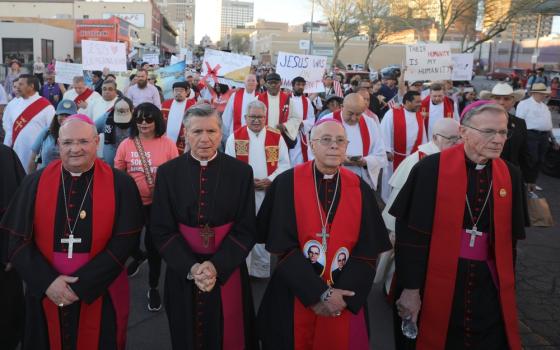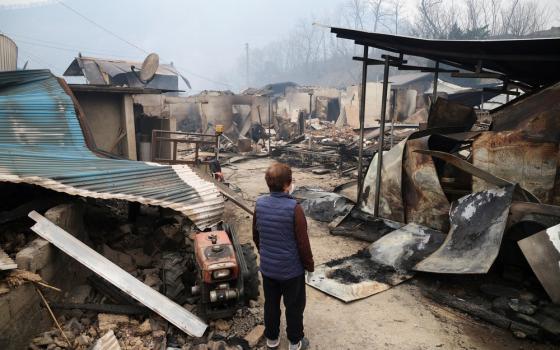Once again, Pope Francis has unleashed some surprises on Holy Mother Church. His list of new cardinals reflects several of the themes of his pontificate: He did not break any “rules” by keeping with the limit of 120 cardinals set by Pope Paul VI, but he did change the entire playing field.
The most obvious change was the fact that so many of the new cardinals came from the Global South. Desperately poor countries like Ivory Coast, Burkina Faso, the Philippines, Nicaragua and Haiti received red hats. The U.S.? Not a one. Five of the new cardinals come from the pope’s native Latin America, not enough to give that continent a percentage of cardinals that is aligned with their share of the total number of Catholics worldwide, but still a significant number for one conclave.
Pope Francis also chose not to follow the pattern of giving a red hat to those dioceses which are normally considered sure bets. Venice and Turin were overlooked in favor of Archbishop Gualtiero Bassetti of Perugia, a city which has not seen a cardinal since Giacomo Pecci, who went on to become Pope Leo XIII. A source tells me that cardinal-designate Bassetti is instantly papabile, a man cut from the same cloth as Francis and illustrative of the kind of bishop Francis wants, one with the “smell of the sheep.” As well, Pope Francis chose not to give any other red hats to any of the prominent European dioceses with the exception of Westminster where Archbishop Vincent Nichols was raised to the sacred purple. Nichols, unlike, say, Archbishop Leonard of Malines-Brussels, is about as far from a “culture warrior” as one can imagine.
As was pointed out at Vatican Insider, one of the most stunning developments was the lack of “professional theologians” on the list. Only Cardinal-designate Gerhard Muller, prefect of the Congregation for the Doctrine of the Faith, fits that bill, as one would expect for someone leading the CDF. Most of the others have some degree of pastoral experience at the parish level. This mirrors something I noted last month when the pope shook up the membership of the Congregation for Bishops: Look for more bishops to be selected who have such pastoral experience on their resume and fewer seminary rectors and professors.
One appointment indicates that the pope did not draw up the list without consultation. Archbishop Gerald Lacroix, the hand-picked successor of Cardinal Ouellet in Quebec, made the list instead of Archbishop of Montreal Christian Lepine. Montreal is a huge city and archdiocese, and Quebec is tiny, more ancient, and holds the title of “Primate.” Still, one suspects that the reason Lacroix got the nod and not Lepine is that the Holy Father, who meets with Cardinal Ouellet every Saturday, asked him who in Canada should get the red hat.
The selection of Bishop Chibly Langlois of Las Ceyes, Haiti, not only awards that impoverished country its first cardinal but could foretell one of the pope’s approach to selecting those who will elect his successor: Langlois is not the archbishop of the largest or primatial see, but he is the president of the bishops’ conference. Could the pope, in future selections, look less to the history of a diocese, or to its size, and instead award the red hat to those bishops who have been selected by their confreres to lead their nation’s bishops’ conference? That would have the effect of making the selections far more democratically informed and dependent on papal whim. Could Louisville see a red hat?
The most important U.S. consequence of the list is that Archbishop Wilton Gregory, who might have become Atlanta’s first cardinal, is now free to head back to Chicago. Only once in recent memory, and never in the U.S., has a cardinal been transferred from one diocese to another: Cardinal Angelo Scola was transferred from Venice to Milan in 2011. If Archbishop Gregory had been given a red hat while serving in Atlanta, he would have been parked there. That said, and given the pope’s willingness to overlook Venice and Turin (and Toledo and Lisbon, etc.), one can anticipate that Baltimore and Philadelphia may have seen their last cardinals, just as Detroit and St. Louis are no longer cardinalatial sees. Look for Atlanta, or Miami, or San Antonio, in addition to Los Angeles, to be the next U.S. dioceses to find themselves with a cardinal.
It is hard to consider something as steeped in tradition as the cardinalate as a source of novelty and innovation. But, this is Pope Francis who seems to have a knack for making changes without upsetting the entire apple cart. Most of the names on the list are unknown to those outside their dioceses. We will get to know more about them in the weeks ahead. My guess is that all of them will, in some significant way, reflect Pope Francis’ own approach to ministry, a certain humility, a commitment to the poor, none of the “butterfly” clerical qualities the pope denounced in a sermon last week. This pope is not content to make statements or changes that can be dismissed as “stylistic.” No pope can “stack” a conclave that will elect their successor: Francis was chosen by men all of whom had been appointed by Pope John Paul II or Pope Benedict. But, I suspect there is no going back on the change that has taken place at the Vatican, and that has so captivated the rest of the Catholic world: A Church that is less focused on itself is here to stay and one of the most traditional, most “self-referential” things a pope can do, name cardinals, has become an avenue for reinvigoration too.




